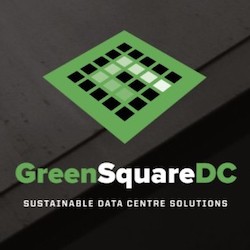I’m a techno-enthusiast. I find it fascinating how, over the past decades, emerging technologies and digital platforms have enabled innovation and improved so many people’s lives through better healthcare, access to financial services, and infrastructure development.
One cannot ignore the mounting discomfort with exponential technology advances, however, including among some of the most diehard technophiles and experts in the field — as the recent open letter calling for a six-month pause on the development of advanced AI systems shows. The potential for the use of technology to cause harm is growing as technology gets more deeply and invisibly embedded in people’s lives, all the more so if companies fail to put the right guardrails in place.
Technology Is Not Neutral
Technologies are like tools — we can use them for different purposes and in different ways. The historian of technology Melvin Kranzberg established as his first law of technology that “Technology is neither good nor bad; nor is it neutral.” Humans are involved in every step of the design, development, deployment, and use of technologies. The design and usage of technologies are embedded in complex webs of more or less intentional decisions. And these decisions affect not only the ways in which people use these technologies but also larger societal, political, and environmental structures.
With the proliferation of emerging technologies such as generative AI, intelligent and autonomous systems, and extended reality, the risk of products being misused only increases. Meta’s controversial Blender AI bot, TikTok’s addictive algorithms, and ChatGPT’s data breach are just a few cautionary examples of what can go wrong.
Unfortunately, many tech companies haven’t yet learned that prioritizing profitability over ethical principles is short-sighted and that the long-term impact can hurt their brand and society at large. Without a framework in place to anticipate the unintended consequences of their experiences, companies will find themselves complicit in creating these harms, erode trust in technology and their brand, and lose business.
The Time To Prioritize Ethics In Experience Design Is Now
Consumers, employees, and governing bodies are increasingly holding companies accountable for not reflecting their values and commitments in the experiences that they create. Thirty-two percent of French online adults say that they would stop doing business with a company permanently if they see that company saying or doing something that is opposite to the values they personally stand for.
Practicing responsible design, which Forrester defines as creating experiences with the intent to do good and avoid harm to all stakeholders, not just shareholders, will help your organization:
- Deliver on its values, purpose, and commitments. Practicing responsible design puts action behind a company’s commitments to their values, customer experience, corporate social responsibility, and building a sustainable future. Responsible design is a framework that ensures that your company values are reflected in the products and services you design. If you choose to go to market standing behind a given set of values, you need to design your experiences in accordance with these values — or else it might be perceived as “values washing.” Consumers will see through you if you don’t reinforce your values.
- Earn trust with customers, employees, and partners. Brands that demonstrate traits such as empathy, transparency, and accountability — some of the top levers of trust — deliver on their promises, build credibility around the company’s values, and earn more business. Forrester survey data shows that customers with high trust in a brand are more willing to buy additional products, experiment with new products from the brand, or share personal data with the brand.
- Create differentiation and drive sustainable value. Designing responsibly gives companies a framework for deploying emerging technology that customers and employees embrace, not fear — thereby innovating better.
Want To Hear More About How To Embed Responsible Design Into Your Operations?
Those attending Forrester’s CX EMEA Forum in London on May 10–11 will have a chance to see and hear this research in person. I’ll personally deliver a keynote presentation on this topic. I’ll also be available for one-to-one meetings throughout the event to answer your questions.
Register here. I look forward to seeing you in London in May!
What You Will Learn In The Keynote
- Why responsible design has become a business imperative
- How to decide what responsible design should mean at your organization
- How to start your responsible design journey by developing the right governance models, processes, and metrics
Guest Author: Aurelie L'Hostis (pictured at top) is principal analyst at Forrester Research Inc. The following analysts contributed to this research: Gina Bhawalkar, David Truog, and Senem Guler Biyikli. Read more Forrester blogs here. More: Read all guest blogs here.




